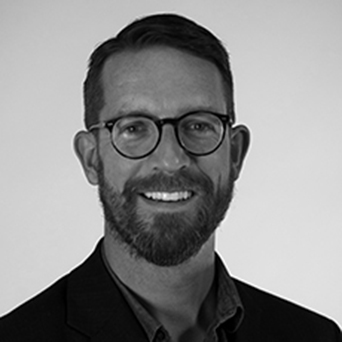
Greg Griffin is a Safe-D faculty researcher at TTI working on Safe-D Project 02-026: Sources and Mitigation of Bias in Big Data for Transportation Safety and Safe-D Project 02-027: Street Noise Relationship to Vulnerable Road User Safety. Safe-D Student Huyen Le interviewed Dr. Griffin as part of the the Safe-D Student and Faculty Interview Chain. Read on to learn more about Dr. Griffin and his research!
What are three fun facts about you?
- 1. Cold-brewing coffee by the quart helps me stay cool in the Texas summer.
- 2. I have raced bicycles in more states than I’ve presented research on bicycling.
- 3. I’m starting a new role as Assistant Professor of Urban and Regional Planning at the University of Texas at San Antonio (UTSA) in Fall 2019.
What are your research interests?
Broadly, my research involves sustainable transportation, participatory planning, and health. Some of my research combines all three, such as finding new ways bicyclists can contribute knowledge via smartphones to improve street networks. Lately, I’ve been fascinated with science and technology studies (STS) that reveal how social processes and technical innovation interact to impact transportation systems.
How did you end up working at your current institute? Describe the path that led you to your current position.
I have worked as a planner in the private and public sectors, including Texas Parks & Wildlife Department and the Capital Area Metropolitan Planning Organization in Austin, Texas. I felt compelled to try to ‘fix’ areas of our field–such as the lack of information on bicycling and methods for online public participation–excellent fodder for applied research! Texas A&M Transportation Institute (TTI) was already engaged in these areas, so it was a natural fit for me to transition from planning practice to applied research. I also found teaching transportation in the geography department at Texas State University as an adjunct lecturer provided a weekly opportunity to impact lives and (I hope) improve the field. I stopped lecturing at Texas State to finish a Ph.D. at The University of Texas at Austin while still working at TTI, and realized how much I missed teaching. So now as an Assistant Professor at UTSA, I get to continue the research I started at TTI and UT-Austin while working with graduate students! It’s been a fun and rewarding path so far.
How did you hear about the Safe-D National UTC and how did you get involved with this Safe-D project?
I remembered TTI’s successes with the former Southwest Region University Transportation Center (SWUTC), and stayed in touch with senior colleagues involved in developing the Safe-D UTC. When Safe-D sent out a call for projects, I talked with Associate Director Dr. Sue Chrysler about my interests in crowdsourcing and bias issues. She suggested a small project on bias in big data would get a good start on the issue, and that became Sources and Mitigation of Bias in Big Data for Transportation Safety.
Please describe your Safe-D project, including how you will be conducting/have conducted your study/studies, any major findings thus far that you can share publicly, and how the outcomes of your project will impact transportation safety.
The Bias in Big Data study included a review of previous literature and interviews with big data experts, to identify the sources of bias, and uncover ways current practitioners and researchers worked to mitigate the biases. We hoped to consolidate and generalize emerging knowledge, to help people understand some of the problems and solutions involved with bias in big data. We found four broad categories of bias, 1) coverage, sampling or non-response bias, 2) measurement bias, 3) social desirability or demographic bias, and 4) aggregation bias. We aligned these with approaches to mitigate the biases in transportation safety practice and research, including data fusion, filtering unreasonable data points, weighting, and modeling. A surprising finding to me was the disconnect between researchers who saw big data sources as a full representation of a transportation phenomena, and those who identified specific biases related to the data source and processing. The difference means nothing less than our understanding of reality for transportation safety! Practitioners have seen the results and are able to ask intelligent questions of data providers–including issues of who the data represents and how the companies process data before they get the end product. This could lead to better decisions on transportation data to support safety, and even nudge data providers to improve their offerings for clients. Researchers have a succinct guide to bias in big data with methods to mitigate the problems, which can improve their research designs and results.
What would you suggest to researchers and practitioners working with big data?
Both academics and professionals should start with the question they really want to solve and find which data answers it, rather than the other way around. Practitioners might find that some of the big data sources really do not address their main issues, while some can be truly groundbreaking, answering questions they never could before. Researchers may be able to actively mitigate biases through sophisticated processing, such as developing and testing new data fusion techniques. These approaches will help transportation data better represent what is happening on the ground, whether that means improving the accuracy of traffic volumes (such as crashes per mile traveled), or merging official crash statistics with crowd sourced data from consumer apps.
How is your team sharing the results of your project with other transportation researchers, practitioners, and/or the general public?
We presented results at the 2019 Transportation Research Board Annual Meeting in Washington, D.C., participated in a national webinar called “Conversations about Counting: Big Data – Implications for Bicycle and Pedestrian Traffic Analysis,” and have the full report and interview dataset for use on the Safe-D website. I am also writing additional academic articles with other colleagues.
Do you expect any follow-on studies to result from the work that you are conducting/have conducted?
Yes, I am working on a text mining approach to analyzing our interview data with TTI colleague Subasish Das, and am developing data fusion methods for crowd-sourced bicycle traffic data with Bahar Dadashova and Shawn Turner at TTI as well. Over the next five years, I am broadening the reach of my research on socio-technical construction of urban planning approaches (such as crowd-sourcing) and infrastructure (including protected bike lanes) through new empirical and theoretical studies. Next, I am developing applied and foundational projects through UTSA’s Center for Urban and Regional Planning Research and the emerging Urban Science Institute.
What advice do you have for a student, like me, who is pursuing a similar career path as yourself?
Define ‘pilot projects’ to help you explore where you want to go next, whether that be professional practice or research. Projects that result in some kind of public media can make a contribution while getting the word out about what you can offer. For instance, my first academic publication was a book review that helped me learn a bit about the publishing process. In general, say ‘yes’ to challenging opportunities that you’re not immediately sure of success. You can learn from things that do not work, and get known more broadly for the things that do. Incorporate thoughtful ‘play’ with your work–try new approaches that are fun and fascinating to you–but be willing to take the extra time to get key projects done right. My project on street noise started from curiosity of biking on loud and quiet streets while running a smartphone app to record sound levels. Students can really grow and differentiate themselves by trading time spent online with a book that deepens thinking. I’m currently reading Inventing Future Cities by Michael Batty, who offers some clear ideas about what using big data means for the way we make urban decisions. Align what meaningful work and fun mean to you!
The Safe-D Student and Faculty Interview Chain was created to encourage Safe-D students to facilitate contact with faculty and staff members participating on Safe-D projects via conducting a brief interview as a networking and career-building opportunity. To learn more about this initiative, please contact Safe-D Program Manager, Eric Glenn.
